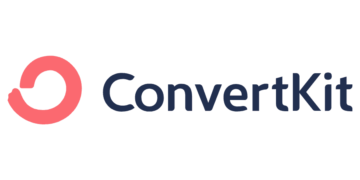No products in the cart.
Debunking Myths and Choosing the Right Strategy: The Debt Avalanche vs. Debt Snowball
The Debt Avalanche vs. Debt Snowball: Debunking Myths and Choosing the Right Strategy
When it comes to paying off debt, there are various strategies that individuals can employ. Two popular methods that often come up in discussions are the Debt Avalanche and the Debt Snowball. While both approaches have their merits, there are also several misconceptions surrounding them. In this article, we will debunk these myths and provide an in-depth analysis of these debt repayment methods to help you choose the right strategy for your financial situation.
One common misconception about the Debt Avalanche method is that it is only suitable for individuals with high levels of debt. However, this is not entirely true. The Debt Avalanche method is based on the principle of paying off debts with the highest interest rates first, regardless of their balances. This approach allows individuals to save money on interest payments in the long run and pay off their debts more efficiently. While it is true that individuals with higher levels of debt may benefit more from this method, it can still be a viable option for those with lower debt amounts.
On the other hand, the Debt Snowball method is often criticized for not being financially optimal. This method involves paying off debts with the lowest balances first, regardless of their interest rates. Critics argue that this approach may result in individuals paying more in interest over time. However, the Debt Snowball method has its advantages as well. By focusing on paying off smaller debts first, individuals can experience a sense of accomplishment and motivation as they see their debts decreasing. This psychological boost can be valuable in staying committed to the debt repayment journey.
It is important to note that both the Debt Avalanche and Debt Snowball methods can be effective, depending on individual circumstances. The key is to understand your financial situation and goals before choosing a strategy. If you have a significant amount of high-interest debt, the Debt Avalanche method may be the most financially prudent choice. However, if you are looking for a strategy that provides quick wins and keeps you motivated, the Debt Snowball method may be more suitable.
Ultimately, the choice between the Debt Avalanche and Debt Snowball methods comes down to personal preference and financial goals. Some individuals may prefer the logical approach of the Debt Avalanche, while others may find the small victories of the Debt Snowball more motivating. Whichever strategy you choose, the most important thing is to take action and commit to paying off your debts. By doing so, you will be taking a significant step towards achieving financial freedom and peace of mind.
Understanding the Debt Avalanche
The Debt Avalanche method involves prioritizing debt repayment based on the interest rates of your debts. With this approach, you focus on paying off the debt with the highest interest rate first, while making minimum payments on the rest. Once the highest interest debt is paid off, you move on to the next highest interest debt, and so on.
One common myth surrounding the Debt Avalanche method is that it is the most cost-effective strategy. While it is true that this method can save you money on interest payments in the long run, it may not always be the best choice for everyone. The Debt Avalanche requires discipline and patience, as it can take longer to see significant progress in terms of paying off debts.
Another misconception is that the Debt Avalanche method ignores the psychological aspect of debt repayment. Critics argue that focusing solely on interest rates can be demotivating, as it may take a while to pay off high-interest debts. However, it is important to note that the Debt Avalanche method is designed to minimize overall interest payments, which can ultimately help you become debt-free faster.
While the Debt Avalanche method may not provide the immediate gratification of paying off smaller debts first, it is a strategic approach that can yield significant long-term benefits. By prioritizing high-interest debts, you are effectively reducing the amount of interest that accrues over time. This means that more of your payments will go towards the principal balance, allowing you to pay off your debts more quickly.
Furthermore, the Debt Avalanche method can also help you save money in the long run. By paying off high-interest debts first, you are effectively reducing the total amount of interest that you will pay over the life of your loans. This can result in substantial savings, especially if you have large debts with high interest rates.
It is important to note that the Debt Avalanche method requires a certain level of financial discipline. Since you are focusing on paying off high-interest debts first, you may need to make sacrifices in other areas of your life in order to allocate more money towards debt repayment. This could mean cutting back on discretionary expenses, finding ways to increase your income, or making other lifestyle adjustments.
Ultimately, the Debt Avalanche method is a powerful tool for tackling debt, but it may not be the right approach for everyone. It is important to consider your own financial situation, goals, and personal preferences when deciding on a debt repayment strategy. Whether you choose the Debt Avalanche method or another approach, the most important thing is to take action and start working towards becoming debt-free.
Exploring the Debt Snowball
The Debt Snowball method, on the other hand, involves prioritizing debt repayment based on the size of your debts, regardless of interest rates. With this approach, you focus on paying off the smallest debt first, while making minimum payments on the rest. Once the smallest debt is paid off, you move on to the next smallest debt, and so on.
One common myth surrounding the Debt Snowball method is that it is not financially savvy. Critics argue that by ignoring interest rates, you may end up paying more in interest over time. While this may be true, the Debt Snowball method has its own advantages. By focusing on small wins and quick victories, it provides a psychological boost and helps individuals stay motivated throughout their debt repayment journey.
Another misconception is that the Debt Snowball method is only suitable for those with a small amount of debt. However, this method can be effective for individuals with larger debts as well. By paying off smaller debts first, you free up additional cash flow that can be used to tackle larger debts more aggressively.
In addition, the Debt Snowball method also allows individuals to experience a sense of accomplishment as they see their debts gradually decreasing. This can be a powerful motivator, especially for those who may feel overwhelmed by their debt load. By focusing on the smallest debt first, individuals are able to quickly eliminate one debt from their list, which can provide a sense of relief and encouragement to continue on their debt repayment journey.
Furthermore, the Debt Snowball method can be particularly beneficial for individuals who struggle with discipline and sticking to a long-term plan. By breaking down their debt into smaller, more manageable chunks, individuals are more likely to stay committed and maintain their momentum. This method provides a clear and structured approach to debt repayment, making it easier for individuals to track their progress and stay on track.
It is important to note that while the Debt Snowball method may not be the most financially optimal approach, it can still be a highly effective strategy for individuals who are looking for a practical and psychologically empowering way to tackle their debts. Ultimately, the choice of debt repayment method depends on an individual’s financial situation, personal preferences, and long-term goals.
Choosing the Right Strategy for You
Now that we have debunked some of the myths surrounding the Debt Avalanche and Debt Snowball methods, how do you choose the right strategy for your financial situation? Here are a few factors to consider:
1. Financial Goals
Consider your long-term financial goals when choosing a debt repayment strategy. If your primary objective is to minimize overall interest payments and become debt-free as quickly as possible, the Debt Avalanche method may be the right choice for you. This method focuses on paying off debts with the highest interest rates first, allowing you to save more money in the long run. However, if you value quick wins and psychological motivation, the Debt Snowball method may be more suitable. With this method, you prioritize paying off debts with the smallest balances first, giving you a sense of accomplishment and momentum as you see your debts disappear one by one.
2. Debt Amount and Interest Rates
Evaluate the amount of debt you have and the interest rates associated with each debt. If you have high-interest debts that are significantly impacting your overall financial health, the Debt Avalanche method may be more beneficial. By tackling these high-interest debts first, you can reduce the amount of interest you pay over time and potentially save a substantial amount of money. On the other hand, if you have smaller debts that can be paid off relatively quickly, the Debt Snowball method may provide the motivation you need to kickstart your debt repayment journey. The satisfaction of paying off these smaller debts can give you the confidence and momentum to tackle larger debts later on.
3. Personal Motivation and Discipline
Consider your personal motivation and discipline levels when choosing a debt repayment strategy. If you are someone who thrives on quick wins and needs constant motivation to stay on track, the Debt Snowball method may be the better choice. The sense of accomplishment that comes with paying off smaller debts can provide the psychological boost you need to stay motivated throughout your debt repayment journey. However, if you are disciplined and patient enough to focus on long-term savings, the Debt Avalanche method may be more suitable. This method requires you to prioritize debts based on their interest rates, which may not provide immediate gratification but can lead to significant savings over time.
4. Seek Professional Advice
If you are unsure about which debt repayment strategy is right for you, it is always a good idea to seek professional advice. A financial advisor or credit counselor can provide personalized guidance based on your specific financial situation and help you make an informed decision. They can analyze your debts, interest rates, and overall financial goals to recommend the most effective strategy for your needs. Additionally, they can provide support and accountability throughout your debt repayment journey, ensuring that you stay on track and achieve your financial goals.






















![A Comprehensive Review of [Course/Product/Experience Name] 22 man in gray shirt sitting on black chair](https://theamericansidehustle.net/wp-content/uploads/2025/03/man-in-gray-shirt-sitting-on-black-chair-1-scaled.jpg)














































































